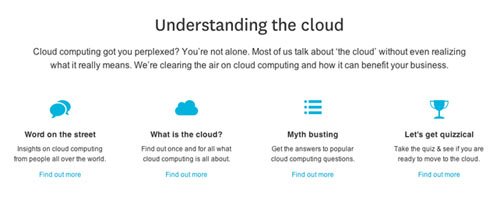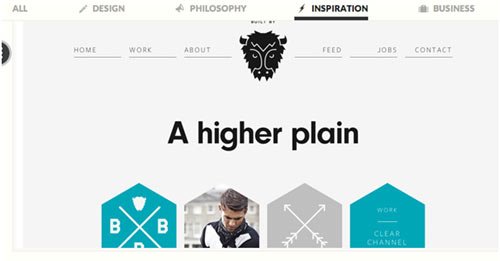The challenge of great web design is to walk the line between producing a unique, brand-focused aesthetic and an easy-to-use interface. The moment your design becomes over-complicated or hard to follow, users will click off and look for more Website Software. Here are four tips to help you hit the right creative/intuitive balance.
1. Clear Navigation and Iconography

The most important factor in weighing the success of your landing pages is its usability. This means no matter how pretty it looks, users must be able to find their way from A to B intuitively and effortlessly. Keep layouts simple and use familiar formats. Creative iconography can also be a great way to promote easy site navigation while also building up the brand.
The Xero Cloud guide pictured above is a great example of good spacing and clear layout on a landing page. It also makes use of icons to divide sections and make information easy to digest.
2. Call to Action

Websites are more likely to succeed when they give their users something to do. Calls to action give visitors to your site a clear direction. They can transform the information your site provides from merely interesting to immediately actionable. All landing pages should feature effective calls to action. Call to action link buttons should be clear and immediately noticeable, made to stand out with contrasting colors or bold text, as above.
3. Word-Image Balance

Users need to be able to absorb information quickly. If your site is built around large blocks of text you might want to think about incorporating a few more images. A great way to do this is to mix flat design with photography. Flat design keeps things clean and clear and allows photographic images to pop.
Getting the balance of text and image to provide users with the information they need often requires some careful consideration. If you find yourself in need of further guidance, check out this article.
4. Landing Page Testing

It’s important to gauge how users are interacting with your site in order to make effective and appropriate improvements. Google Analytics is a great tool for monitoring the average amount of time visitors are spending on each page, which pages are most frequently landed on and which pathways are most likely to lead to ‘conversions’ where site goals are achieved, be it purchase, membership or mailing list sign up.
You should also check the speed of your website by putting it through a simple site speed test, where you can also check your speed against your competitors’ sites. If your site is running too slowl and landing pages take a long time to load, you could put users off before they’ve even had a chance to see what it is the site has to offer. In a business where first impressions mean everything, every millisecond counts.
